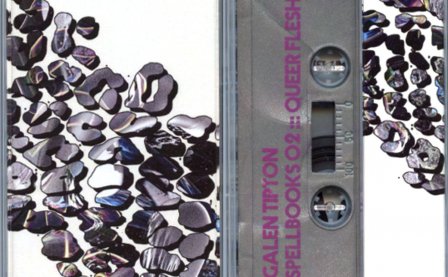fake. n., v., adj.
derived terms — fake it; fake out; genuine fake.
synonyms — a trickery: flattery or cunning?
idioms (i) — fake it ‘til you make it.
semantics (i) — contrary to original as contrary to imitation or falsehood, or both. (if the former is the sincerest form of flattery, what’s the other?)
semiotics (i) — in other words: one genuine, the other disingenuous (or is the distinction altogether arbitrary?); sampling as the basis of new assemblages vs. thesaurusizing as “creative” process.
related terms — pretension (as fake-authenticity); posturing (as fake-embodiment); plagiarism (as fake-originality).
idioms (ii) — good artists copy; great artists steal.
semantics (ii) — can we problematize the “genuine” essence of “originality” & the fake-to-theft correspondence?
semiotics (ii) — fake as unreality. fake as deceit, an ethic robbery.
discussion — the heavily context-based applications of fake reflect the dominant ideology with regards to the semantic politics of contemporary aesthetics: neither a still-life painting nor a photograph is said to plagiarize the subject (i.e., to constitute a fake), despite actively reproducing the subject — copying it, even. which is to say that there’s a distinction between the fake & the representation such that, rather than the representation itself — which is already a human artefact — only the representation of the representation can constitute a fake. that is: the real >> the first-order representation (of the real) >> the second-order representation (of the first-order representation; i.e., the fake).
if the representation exists in a liminal space between the categories of real & fake, this means that (1) the jump from real to fake cannot take place directly, implying that (2) the real itself cannot be directly stolen, robbed it of its integrity, commodified, etc., which in turn means that (3) only human intervention via representation establishes the very ontological possibility of a fake.
although the former conceptualization of fake persists in common discourse, it reproduces an ontology inherited from a pre-industrial period during which the dominant paradigm of human property & labor relations with respect to nature was one of enclosure, management, & exploitation. since then, groundbreaking developments in materials science & other fields have inaugurated a new paradigm in which humans do not merely exploit but actively reconfigure nature for the purposes of mass production beyond its ordinary parameters. this development, which we undertook as early as we began to alloy copper for bronze & brass millennia ago, has brought us to a post-industrial present dominated by the flexible polymer, a concept that, in its symbolic vagueness, is a repository of infinite possibility — but that disrupts our former ways of thinking about nature.
the polymer occupies the same problematic space as the concept of the human itself. the polymer & the human are both, of course, a part of nature. & yet there is clearly a sense in which the human is unlike — which is not to say “above” — other beings, unique insofar as its history tracks the human’s constant reconfiguration of itself & its relations to other humans & to the ecosphere more broadly. in other words, there is a sense in which the human appears to be both inside & outside nature, a liminality that the concept of the polymer shares: as the building blocks of the ecosphere, they follow from the laws of physics & chemistry; & yet they’re subject to constant reconfiguration toward the formation of new substances, which are discursively outside nature.
specifically, this reconfiguration endows the polymer with the quality of synthetic, rather than organic. it affects how we view our own species, too: there’s something uncanny about referring to a city as part of the ecosphere, just as it seems contradictory to link a synthetic polymer with “nature” — despite both representing mere reconfigurations of naturally-occurring components. as in the case of the real-fake dichotomy, it’s the problematizing quality of human intervention — this time via reconfiguration rather than representation — that establishes the very ontological possibility of a fake (i.e., the synthetic).
now, with the organic-synthetic opposition mapped onto our conception of the real & the fake, we’ve become deeply uncomfortable with whatever pollutes these boundaries: this discomfort persists in categorical suspicions of GMOs & other products of “food engineering;” they represent palpable manifestations of the synthetic-fake within vessels that pass for organic-real, teasing our ideas of what we consider “edible.” not to mention, the highly technical level at which these reconfiguration processes take place thoroughly alienates us from their synthetic products, which are mystified in turn.
hence, only in this current post-industrial condition is such an utterly paradoxical construction as fake meat even possible. the term’s semantic viability rests in the fact that it’s a reconfiguration of other substances — known or unknown to the consumer, as the case may be — that reproduces the original in a way that was simply not possible in a pre-industrial era, when nature couldn’t be straightforwardly copied & the fake was simply the representation of the representation.
galen tipton’s fake meat pokes fun at our post-industrial alienation by accelerating reconfiguration via the absolute deconstruction of the soundscape, which is framed as a sonic polymer of samples that one can instrumentalize, rearrange, discard, etc. cut down to their component parts & decontextualized, these sonic motifs melt into a sort of primordial molecular soup whose ingredients are distinct & yet totally alloyed, unnatural & yet somehow familiar — organic & synthetic; real & fake.
tipton’s iconoclasm of signifiers is a complete sonic dysfunction that escapes systematization & thus foresees a future in which human consumption is narrowed to industrial products whose origins cannot be traced, whose authenticity is totally opaque. but what’s more, straddling these dichotomies, fake meat unmasks the idea of “authenticity” — the real — as a fraught category to begin with.
More about: galen tipton




